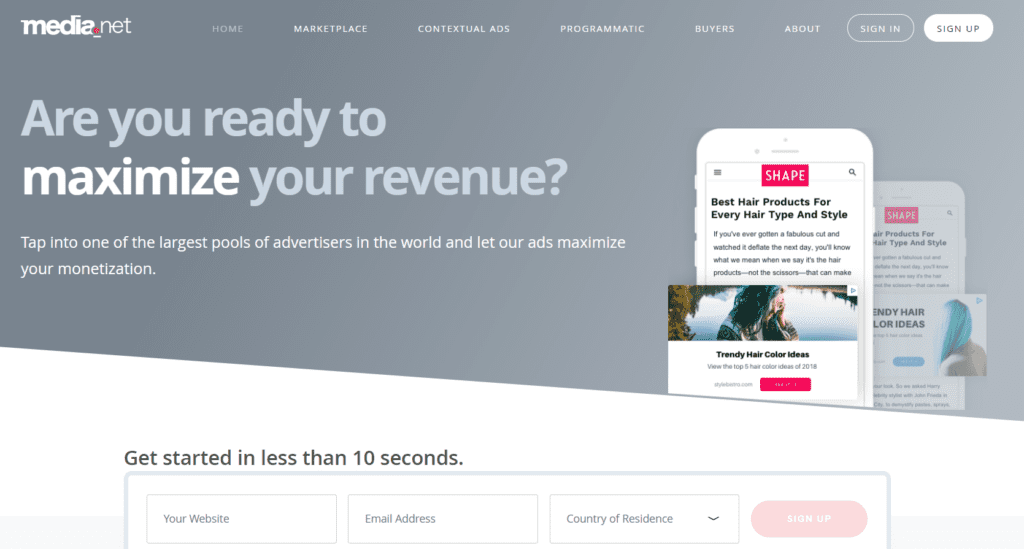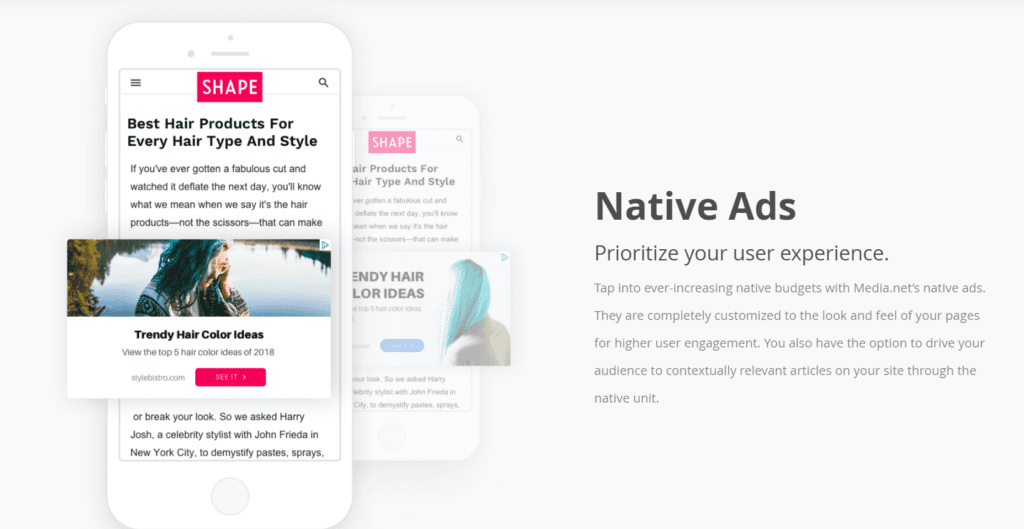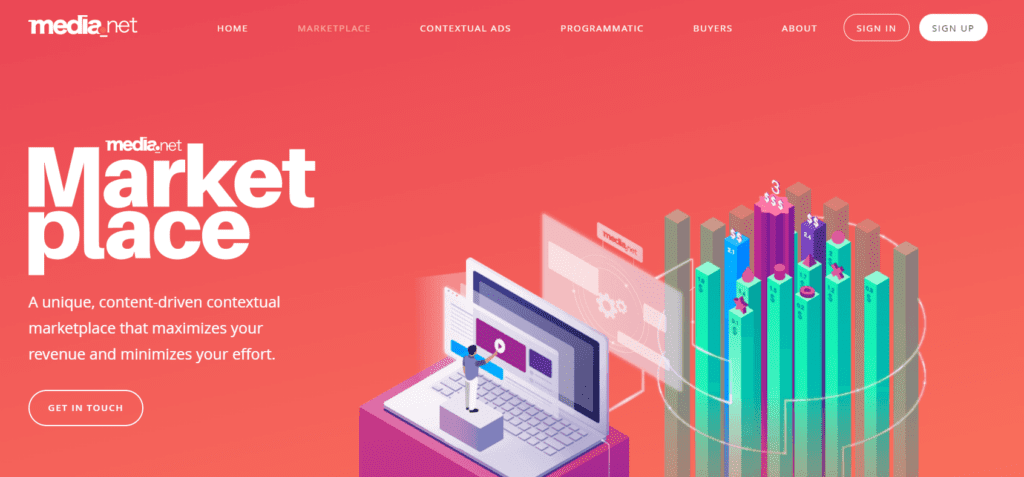Table of Contents
Google Adsense is a great content marketing tool, but having a few other options can help you get the most out of it. When choosing an ad network, your decision should be taken into account by niche, location, audience type, and other factors. While there are many different types of ad networks that provide advertisements in countless formats, including pop-ups, banners, and mobile ads, Media.net is a platform that comes close to or even better than Adsense in some respects. And today we will take a look at pros and cons of Media.net.
What is Media.net
Media.Net ranks second after Adsense in contextual advertising. The first one has VIP access to the Yahoo! Bing. This means publishers using Media.Net can expect more than $6 billion in search demand. Even if your niche is small, Media.net will have budget advertisers looking to take advantage of your content pages.
Pros and Cons of Media.net
Let’s take a look at all pros and cons of Media.net.
Pros of Media.net
- Extensive pool of advertisers from Yahoo and Bing
Media.Net works with renowned publishers such as Reuters, Forbes, Kiplinger, Elle and Cosmopolitan. Content creators know quite well that Yahoo-Bing, Facebook and Google are the most important in PPC advertising. Your success as a content entrepreneur or blogger for that matter depends on your work with one of these platforms. Media.Net provides its clients with two search engines in partnership as one.
- Better pay
To maintain high standards and meet expectations, Media.net has a rigorous process to ensure the only website with premium content is accepted. The return that can be expected at the end of the journey justifies the required quality. This is roughly equal to, and sometimes more than, what Adsense pays publishers. Therefore, it’s safe to say that Media.net is a great alternative to Google Adsense…
- Related announcements
Even as a blogger, you can use any ad to keep the light on, irrelevant ads can ruin your chances of a breakout. If users are exposed to push ads about things they don’t care about, they’ll likely feel disconnected even from your content. Media.net displays relevant ads that sync with your content. It helps to improve the user experience on your website.
- Native formats
The problem with many ad networks is that they serve ads that disrupt the visibility and usability of your content. For bloggers, this situation can be a career killer. The best thing about using Media.net is that they create ads that match the format of your site. Ads are also made to be compatible with the mobility of your site.
- Easy setup
As an advertising platform, Media.net gives bloggers and publishers the freedom to customize the display of their ads. Users can create their own ad forms, which are only possible on this ad network. In addition to customizing colours and shapes, you can choose from a variety of options, such as pinning to mobile, in content, or interstitials.
- Compatible with other ad networks
When working with media.net, you can choose other ad networks as well. Media.net compatibility beats devices and covers other systems, which can help double your income as a publisher. This freedom is rarely found in other systems.
- Call manager
Publishers often need personal support when it comes to ad optimization and account setup. With the right guidance, even a new blogger can immediately start creating engaging content that brands can find valuable. You can get this kind of support from media.net at any time by just sending them an email. All publishers are assigned an account manager who goes out of their way to ensure that everything runs smoothly.
- No viral traffic required
Media.net operates on a different business model (cost per 1,000 impressions) compared to other ad networks. Publishers can get paid even with low traffic. This is good news for entry-level bloggers because traffic often disqualifies many trying to join Google Adsense.
Cons of Media.net
- Payments in a single currency
No matter which part of the world you are from, media.net will force you to accept payments in USD. That’s good for publishers in the US. However, bloggers from other parts of the world can easily suffer from unfriendly exchange rates.
- Designed for Tier 1 countries
In addition to using a single currency, the platform is also heavily focused on Tier 1 countries. This term usually refers to countries with higher purchasing power. This means that if your content is not intended for audiences in economically strong countries, you may be suffering from a low income stream.
- Static advertising
Media.net ads are not live, which means no response. On networks like Adsense, their ads change shape and position when the user interacts with the site. This often helps to increase the visibility and interactivity of your ads. The static ad format may not work best on mobile platforms.
Now you know all Pros and Cons of Media.net and you can decide, should you use it or not.




